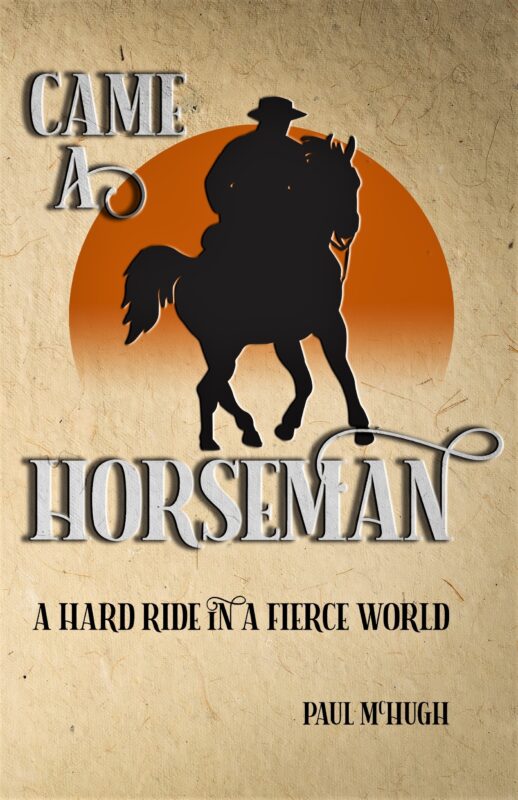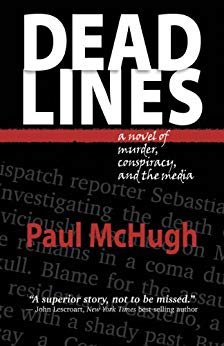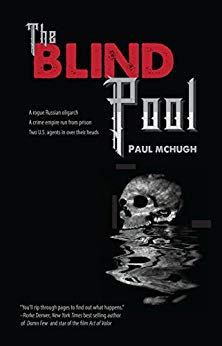
The Sage of Oxford, William Faulkner, proved that one could become a giant of letters even if only a shrimp of a man. The size of a mind, heart or talent, y’see, just ain’t dependent on physical stature.
Many anecdotes illustrate the character of this keen, acerbic, durable, and highly productive writer. One of my favorites describes a moment that occurred after Faulkner made it into The Big Time, winning both a Nobel in Literature and a Pulitzer Prize for his work.
He attended a publisher’s party for top authors in New York, and arrived at the door of a hotel’s plush suite with his agent in tow. But he was told, “Come on now, Bill, this party is for authors only, not agents.” Faulkner drew himself up to his full five feet, four inches, to retort, “Don’t be ridiculous. Anyone can write a book. But selling it? That’s an act of sheer genius!”
TIME MARCHES ON—IN JACKBOOTS
Nobody should ever mistake then for now. Amid that great heyday of American male authors (1950s and 1960s), when literary lions like Faulkner, Hemingway, Steinbeck, Dos Passos, and Fitzgerald bestrode our bookshelves, their careers were amply served by vast and reliable mechanisms of review, criticism, academic study, promotion and publicity.

Now, the whole publishing scene seems far more fragmented and chaotic. The boosts that writers and their works receive oft is sporadic, short-lived, and dicey. Or, as a publishing insider once told me, “People think this is an industry. It’s not. It’s a casino.”
That means, in practical terms: writers and publishers must assess odds and place bets while striving to guess which ploys or gambits might catch fire amid a constantly shifting media and social landscape. They must plunge into a murky struggle for recognition both as individuals and as business partners in order to enjoy even a scant chance of gaining headway.
Consequently, to capture the attention of a data-flooded and highly fickle public in an era of declining readership can feel like trying to flag down a bullet train by waving a mere wisp of a hanky.
TRYING A CASE IN POINT

And now, following release of my new novel SPLINTER, I and my publisher—Bronzeville Books of L.A.—plan to market it with a medley of individual and collective actions.
But, hey! Let’s not bury the lede. Or if we’ve done so, let’s swiftly exhume it! Which would be an entirely apropos, post-Halloween exercise.
Our biggest public event in the S.F. Bay Area shall occur on Wednesday, November 8, at Books Inc. in Palo Alto, right across the street from Stanford University.

Beginning at 7 p.m., I’ll engage in spirited conversation with Markos Kounalakis, international scholar, syndicated columnist, and California’s “second husband” (Markos has the grand good fortune to be married to Eleni Kounalakis, our state’s lieutenant governor).
“Splinter” is a WWII adventure/romance, set in Norway at the start of the 1940 Nazi invasion and occupation. But it bears a strong relevance to present times, since Putin attacked Ukraine in much the same way and for many of the same reasons that Hitler invaded Norway. Not only that, but a wholesale resistance by Ukraine’s free citizens to foreign occupation also seems remarkably similar.
This shall provide Markos and me with grist for a robust discussion of the overarching themes of SPLINTER. I greatly look forward to it. This event is free, and refreshments will be served, along with the torrent of our highly refreshing commentary. (Y’all come!)

OLD SCHOOL IS MY ALMA MATER

Books used to be sold by creating—nationwide—live events such as this. But those methods lurched to a screeching halt amid the Covid pandemic. Prior to that braking action, digital and online forms of outreach began to arise. Once physical assembly of folks in the public sphere became curtailed, conducting outreach via electric media channels swelled to compensate. It now dominates.
But the old school process is something I both understand better and still prefer. Zooming shall never replace the intimacy and reward of reading before a live audience, then personally signing a book for someone who demonstrates that he or she truly desires it. That’s true soul food for a writer.
Doesn’t mean I’ve always been so great at it. After I heard that my first novel, THE SEARCH FOR GOODBYE-TO-RAINS, was accepted by Island Press in 1980, I danced around the outdoor deck of a little house under the redwood trees in the coastal town of Albion, convinced that my life was about to change for the best. Well, it did change. But not very much and not for very long.

My book launch for RAINS shot into the sky like a dime store bottle rocket, popped brightly, then swiftly fizzled. A key reason was that my publisher was small and new, and I was inexperienced too, so here’s what both of us knew about marketing books: doodly-squat.
Over the years since then, I’ve had some people approach to tell me how much RAINS (now an obscure cult novel) meant to them. So, yeah, a few compensations do linger.
TIME SKATES ON—IN ROLLERBLADES

But after RAINS failed to succeed enough to feed me, I turned my focus away from fiction to freelance journalism. Here I found rewards that—if still not great— could at least be induced to crop up with more frequency. I persisted long enough to become a professional journalist, with an allegedly 9-to-5 job that provided a steady check. More than 20 years passed.
I published my next novel, DEADLINES, based on that time in journalism. By then, I’d grown a wee bit smarter about the demands of marketing; my wife Dawn Garcia was more savvy and equally motivated. Together we created a tour of 46 bookstore appearances for DEADLINES that ranged from San Diego to Seattle, and eastward from Santa Cruz all the way to San Antonio.
Our tour proved reasonably productive, yet quite exhausting. We pulled it off in 2010. Now, we close in on 2024. Good luck to us, especially you my fellow writers, who seek to proffer tales that inspire and inform your fellows amid a time of ecological implosion combined with bone-headed acrimony and political befuddlement.
EVER ONWARD

My next two novels, THE BLIND POOL (a contemporary, international crime thriller) and CAME A HORSEMAN (a post-apocalyptic western), were marketed via a mix of personal and digital techniques. Whereupon, whoopee, we now bust loose to hawk the current release of SPLINTER.
One cool aspect of this new novel is that I found the seed for its inspiration in a story I did for The San Francisco Chronicle back in 2007, featuring a hometown hero: the poet and peacenik and Beat publisher Lawrence Ferlinghetti. I’d heard a rumor that Ferlinghetti served in the U.S. Navy during WWII, yet I couldn’t locate any account of those experiences. This informational black hole seemed packed with possibility.

I proposed doing an enterprise story for the paper’s City Desk, and my editors assented. After I contacted Ferlinghetti at his City Lights bookstore, he agreed to yack with me about his warrior past. We met at his favorite hang, Caffe Trieste in the North Beach neighborhood, and conversed for three straight hours.
Lots of surprises lurked in his narrative. One item that truly stuck with me was his secret mission to transfer three U.S. subchaser vessels to Norway’s resistance forces in 1943. This operation aimed to replace the slower, scantily-armed fishing boats that had been used for commando runs from a covert base in the Shetland Islands to hideouts in the fjords of Norway. This trio of new subchasers not only could sail far faster, they were able to vigorously return fire at attacking German patrol boats and planes.
Ferlinghetti’s story tempted me to plunge more deeply into the largely unknown history (in the U.S.) of the Norwegian resistance. I grew more and more fascinated at each step of my research. Actual episodes from that period proved so epic, so fraught and exciting, I discovered very little invention was required to produce a robust thriller set in that time and place.
MORE THAN A “THANKS!” FOR YOUR SERVICE
My Ferlinghetti story ran on The Chronicle’s front page on Veterans Day of 2007. And right now, in honor of all veterans who have risked their lives to serve in a righteous cause, Bronzeville Books plans to make the SPLINTER ebook free via Amazon on November 8 through the 12th. Subscribers to this newsletter shall receive a special e-mail blast on the morning of the 8th; all you’ll need to do then is click through to score a copy.
Of course, you must have a Kindle, or the Kindle app on your other device. But if you don’t, that app is easily loaded onto a tablet, laptop, desktop or smartphone.
So, if you happen to be a vet, or if there are veterans in your family, or if you even know any vets, please do forward this intel along for their welcome use. And if you wish to understand what veterans went through a tad better, order it for yourselves. Also, we plan a special effort to make this offer popular in both Norway and Ukraine, as well as here in the good ol’ USA.
FADING FOOTPRINTS ON FAULKNER’S PATH
My career has always been buoyed by a penchant for in-depth research. It’s served me well in preparation for anything I’ve ever written, whether fiction or non.
My THE SEARCH FOR GOODBYE-TO-RAINS novel has a scene in which a young man who wanders across the U.S. on his motorcycle decides to drop by Oxford, Mississippi, to uncover what he can about the character of a certain famed author in a vague hope to gain a somewhat better grasp of his works.

And yes, I was a young man—age 22—who rode a motorcycle to Oxford 11 years after Faulkner’s death. I leaned my bike on its kickstand, then walked up to old men sitting on park benches around the Courthouse Square, asking if any of them had known Bill. I struck a jackpot. One said he had been an acquaintance, and offered to take me to Faulkner’s gravesite and his home of Rowan Oak.
Next, he dropped me off at the photo studio of Col. J. R. Cofield, who’d not only been Faulkner’s pal but also a quite tight drinking companion, as well as a chronicler of the writer’s life in this hometown. Cofield and I hit it off. As as we chatted, the sketchy outline of a certain short, beady-eyed ghost became far more filled-in, even shaded and tinted with color for me.

By the time I left the place, I had a better idea of that literary genius as a flesh-and-blood man, one with faults and foibles, sure, but also an unyielding determination to make his mark, plus a set of clear ideas of how to go about doing so. His principal ingredient had always been a steadiness of purpose.
“If it had been Bill snatched by the temple cops on that night in Jerusalem and not somebody named Peter,” Cofield told me, “I suspect there would have been four crosses on the hill of Golgotha, not just three.”
So, I concluded that a key force for becoming a good writer was swearing fealty to a similar level of devotion to craft. But should I ever try to write sentences or stories even remotely similar to Faulkner’s? Nah. Another guy had already been there, done that. I might imitate his dedication, but as far as any pursuit of style or voice, I figured I’d have to light out for such territories on my own.
We should conclude by giving that scribblin’ Southern sage a chance to speak.

“Let the writer take up surgery or bricklaying if he is interested in technique. There is no mechanical way to get the writing done, no shortcut. The young writer would be a fool to follow a theory. Teach yourself by your own mistakes; people learn only by error. The good artist believes that nobody is good enough to give him advice. He has supreme vanity. No matter how much he admires the old writer, he wants to beat him.” – William Faulkner, from an interview with The Paris Review, 1956.
Right on, Bill!









